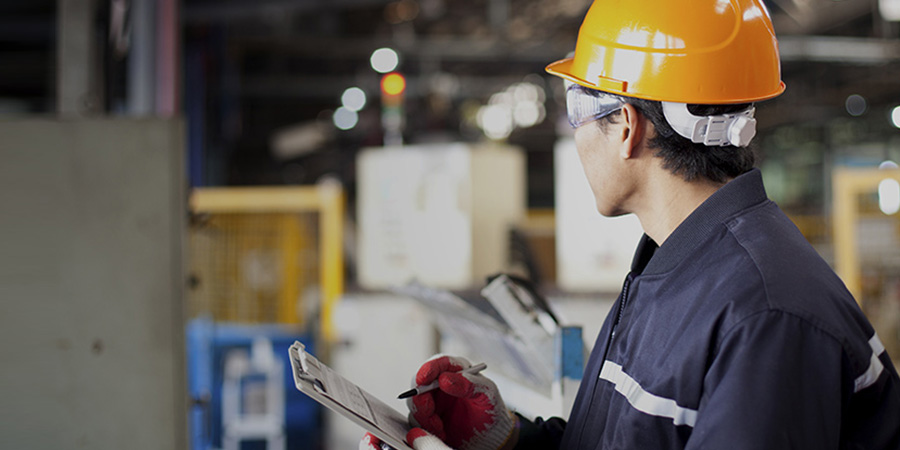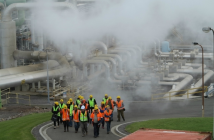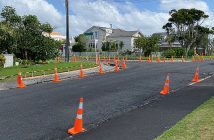Site Safe’s Jim Bell knows all too well how badly things can go wrong in the workplace with a long history of investigating accidents as a safety inspector, and is now making sites safer as an auditor

Jim Bell has been a safety advisor and auditor for Site Safe since 2006 but for well before then he was with the Department of Labour as a factory inspector.
He’s seen the aftermath of accidents and deaths in workplaces and it’s given him a very healthy regard for health and safety.
He started with the DOL, the precursor to WorkSafe, in Auckland in 1976. The training was good, but the accidents he had to investigate were grim.
“The police would always say to me: ‘Do you want to see the body?’ I always said: No thanks.
“The police always seemed immune to the shock value. But if you saw the body, say someone fell in an electroplating bath, oh, it was terrible.
“You never get use to it. Well, I never did. At all.”
That’s why he takes the safety audits he does for Site Safe very seriously. He is one of Site Safe’s experts whose role is to inspect an organisation’s health and safety operations against a standard set of criteria and writes a report, giving a mark out of a hundred.
He says this gives an organisation a benchmark that helps them measure themselves over time, and against the rest of their industry.
He says benchmarking picks out areas a firm can perform better in, and highlights where it is doing well.
“If someone’s coming in at 80 per cent in their audit, and everybody else is getting 90, they know they need to go and have a look at their operations. That seems to be a big plus.”
The key parts of a Site Safe audit involve:
- Checking health and safety documentation
- Personal protective equipment (PPE)
- Emergency procedures
- Site set up and equipment use.
Jim has a solid background in industry. He was an engineering tradesman in Glasgow and moved to New Zealand in 1970. He worked on the construction of the Tiwai Point aluminium smelter and then the glassworks in Penrose before joining the Department of Labour as a trainee inspector.
When he started as an auditor, he says personal protective equipment (PPE) could be a bit lax. In fact, jandals were the protective footwear of choice in some places.
“Now it’s not a problem,” he says.
Documentation has also improved – 12 years ago it was almost non-existent in many places.
“It’s generally good now. If there’s six subcontractors on site, three or four of them will be pretty good and just two will need a bit of tweaking.”
He says where companies aren’t doing so well is adapting quickly to new legislation.
An example of this is how some of them are dragging the chain when it comes to risk assessments and hazardous substances inventories.
And often, he says, the investigation of an incident often doesn’t include the root cause of the accident.
While the Health and Safety at Work Act has been around a couple of years now, many people aren’t fully compliant.
They almost seem to be wanting to see what other people do wrong, Jim says.
“People want more information from WorkSafe, they want more prosecutions, but not themselves of course!”
A bugbear with Jim is getting hazard reporting done properly, especially when he notices non-compliance issues. These can range from people using a ladder incorrectly to not wearing eye protection or things like working on scaffolding with guard rails missing,
“I say to them, ‘why don’t you report/tell each other about these things so they can be avoided in future?’ A lot of the time they’ll just shrug.
“Worker education and management education, we need to do more work there.”
But the drive to get things right must come from the top if the audit reports are to have real value.
“All of the incidents need to go to management, and it is up to management to make that happen.
“Some companies use the carrot to make sure things are reported. They’ll give people beer, tickets to the movies, chocolates … Even at Site Safe there’s a bar of chocolate every month for reporting hazards!”
The critical risk audit Site Safe offers is an in-depth look at high-risk activities happening on a site.
These can be:
- Working at height
- Mobile plant
- Hazardous products and substances
- Asbestos
- Confined spaces.
While it is physical accidents that grab headlines it is worker health that really worries Jim.
One example is people using chemical sprays to do things such as waterproofing.
“I’ve got photographs of people spraying chemicals and they look like snowmen. Their arms are covered [with it], their hands are covered – if they’re wearing goggles you just see two eyes like an owl looking at you.
“Then you stop to speak to them, and they light up a cigarette!”
He says controlling health issues are crucial in the construction sector.
“It’s a reflection of society and where we are … we kill far more people from health-related issues than we do from having them falling off roofs.”
Then there are the preventable injuries.
“For instance there are back injuries, they all cost a lot of money. But nobody does warm-ups. I tell them: ‘Watch the All Blacks, they’re out for an hour before the kick-off getting ready!’”
On the plus side, he’s seen plenty of benefits coming out of regular audits.
Waide Commercial Construction and Scarbro are two firms that Jim says use Site Safe’s health and safety and audit services to continually improve their operations.
“I had some dealings with [Waide’s] site manager and he put me on to their managing director. Just a month ago he said to me, ‘You’re doing a good job, we appreciate what’s happening here.’
“They’re now scoring 95, 96 per cent. It’s really just doing a bit of tweaking and coaching, and we’re starting to look at things like improving incident reporting and identifying underlying causes.
“Scarbro have been going for years and they’re just getting better and better.”
Jim says that a main reason people keep having regular audits is it just keeps them focused on improving things.
“As soon as you get a score, everybody wants to do better.
“And we keep reminding them they are doing lots of good things as well.”
Site Safe offers a range of audit options tailored for medium to large commercial or civil construction projects. For small projects its auditors can also provide flexible health and safety audits, reviews and advice.
“We also have plenty to offer the small business operator to help them in plenty of ways as well,” Jim says.
For more information about Site Safe audits, please go here




